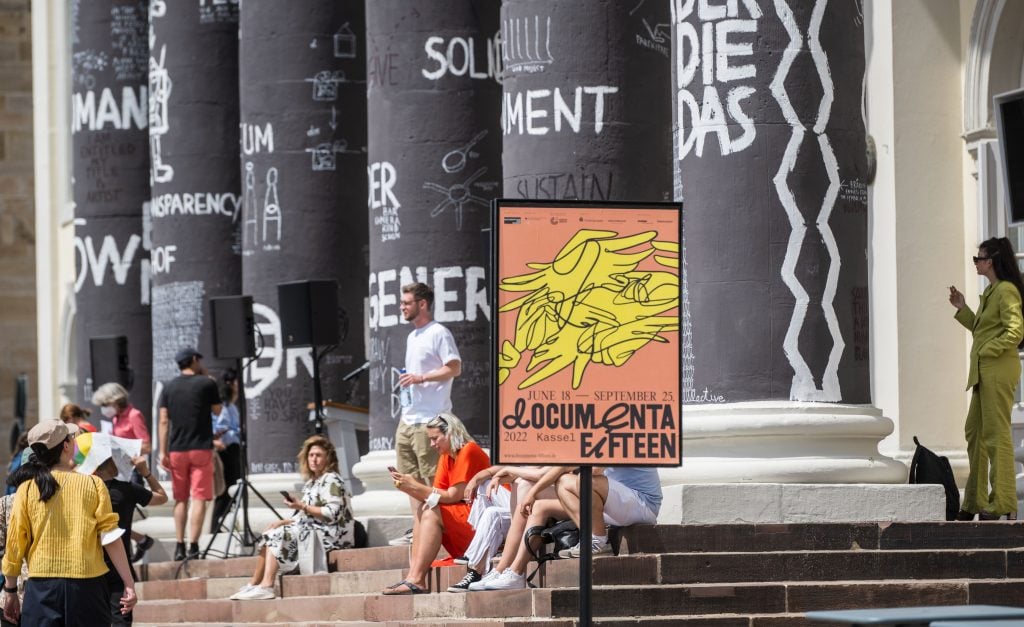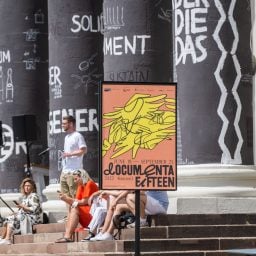The scientific advisory panel enlisted by Documenta’s management to investigate the antisemitism controversy around the show’s 15th iteration released their final report this week. The 133-page document concludes that Documenta 15 “served as an echo chamber for Israel-related antisemitism and sometimes pure antisemitism.” Yet it also describes artistic freedom as a fact that is inviolable, one that should not be subject to legal pre-controls.
Months before the opening of the quinquennial exhibition, German media sparked a debate about potential anti-Israel bias and antisemitic sentiment within the show’s curatorial team. The allegations, which the Indonesian collective Ruangrupa vehemently denied, turned into a real controversy when exhibiting collective Taring Padi’s People’s Justice was revealed days after the preview.
Among its hundreds of caricatures in the monumental agitprop work about the Suharto regime, is a figure of a vampiric-looking orthodox Jew and a pig-headed Israeli agent, rehashing antisemitic stereotypes. The artists and curators apologized and the work was removed.
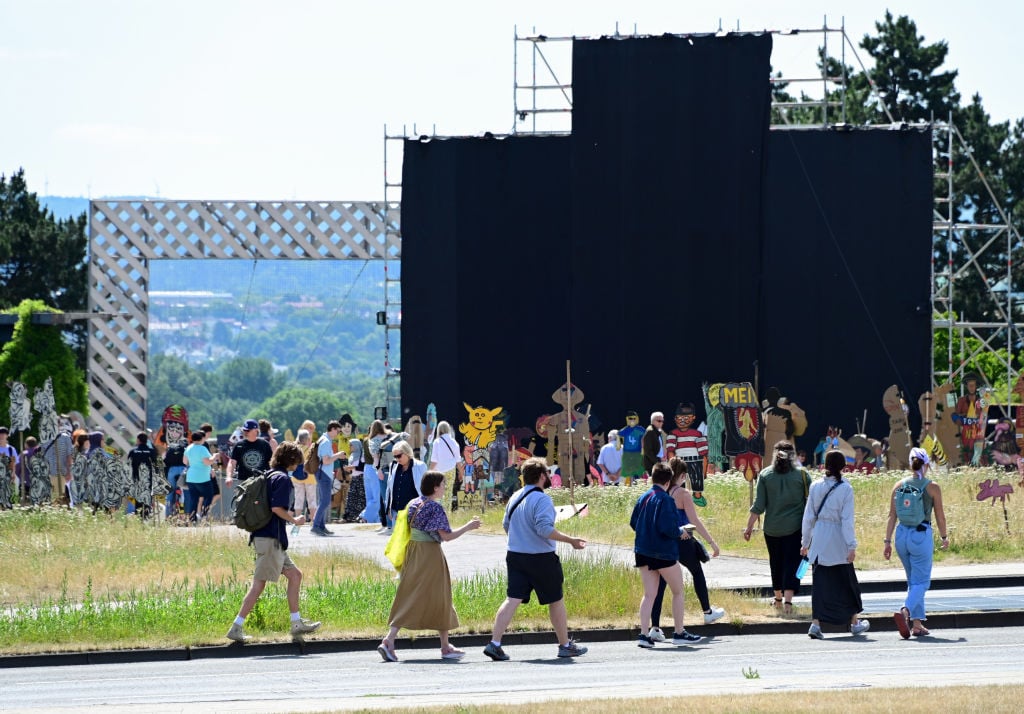
The large painting People’s Justice (2002) by the Indonesian collective Taring Padi, covered with black cloth, on Friedrichsplatz. Several anti-Semitic motifs could be seen on the banner. Photo: Uwe Zucchi/dpa via Getty Images.
In the wake of this, a seven-member panel was commissioned by the government to conduct a report on the contested artworks and the alleged failures of responsibility on the levels of the curatorial, administrative, and supervisory levels. It was also tasked to explore the legal and practical implications for Documenta.
While welcomed by the political stakeholders of the publicly funded event, the establishment of the panel and their preliminary report, in summer 2022, raised criticism from the curators and participating artists, who decried “censorship” and racism.
Based on what the panel called a “minimal definition of Israel-related antisemitism” in the final report (all but one contested image addressed Israel as a military and occupying power), the authors assessed that four works “refer to antisemitic visual codes or statements that can or must be read as antisemitic.”
They refer to four works in the show of more than 1,500 artists: Taring Padi’s People’s Justice, Mohammed Al Hawajri’s Guernica Gaza, drawings in the Archives des luttes des femmes en Algérie and Subversive Films’ Tokyo Reels Film Festival, pro-Palestinian propaganda films believed to be provided by Masao Adachi, a Japanese filmmaker with ties to the Japanese Red Army and the Popular Front for the Liberation of Palestine, both considered terror groups. The latter three works were “plausibly” be considered anti-Semitic “in the sense of an Israel-related antisemitism.”
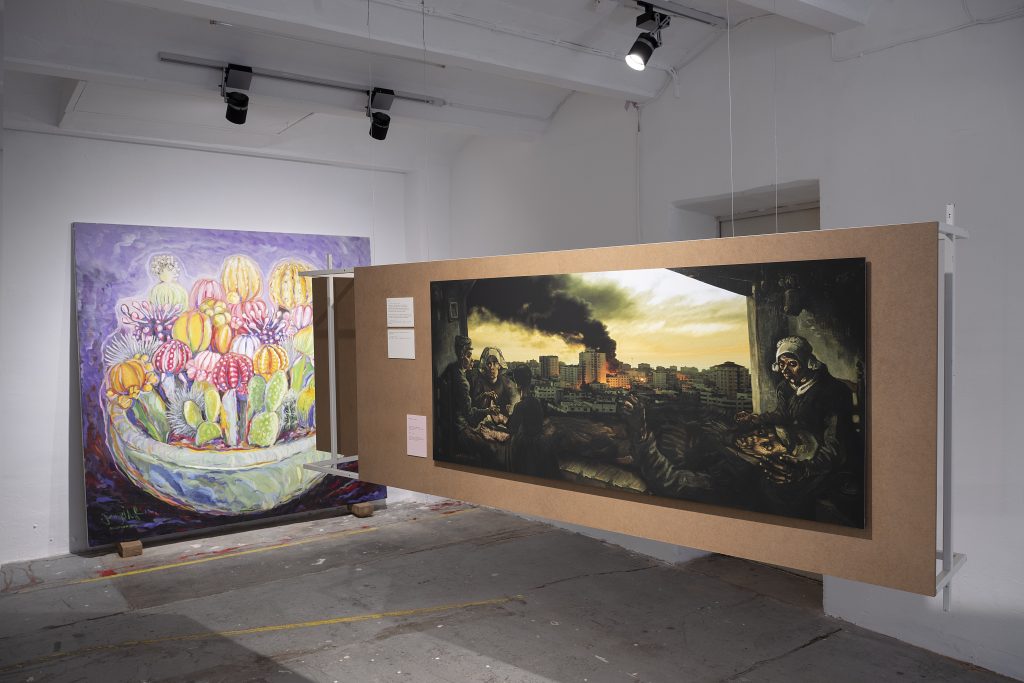
documenta fifiteen: The Question of Funding hosts Eltiqa, 2022, Installationsansicht, WH22, Kassel, 15. Juni 2022, Photo: Nils Klinger
A major point of criticism from the report’s authors concerned the issue of responsibility. According to the panel, “the reactions of the responsible stakeholders—the artistic direction on the one hand and the administration on the other hand—were not adequate to the seriousness of the events or aggravated the situation.”
It accused the curators of averting accusations of antisemitism, and the administration of having too passive an understanding of their role. Additionally, the report pointed out at the supervisory board’s homogenous make-up of political representatives, concluding that the lack of art experts in civil society undermines the board’s critical responsibility and effective control.
The most relevant passages concern the legal implications: Where does artistic freedom end, particularly, if it is publicly financed? And when does the state have to intervene? The answers, also published some months ago in a 50-page paper by legal expert member Christoph Möllers, are a matter of individual investigation.
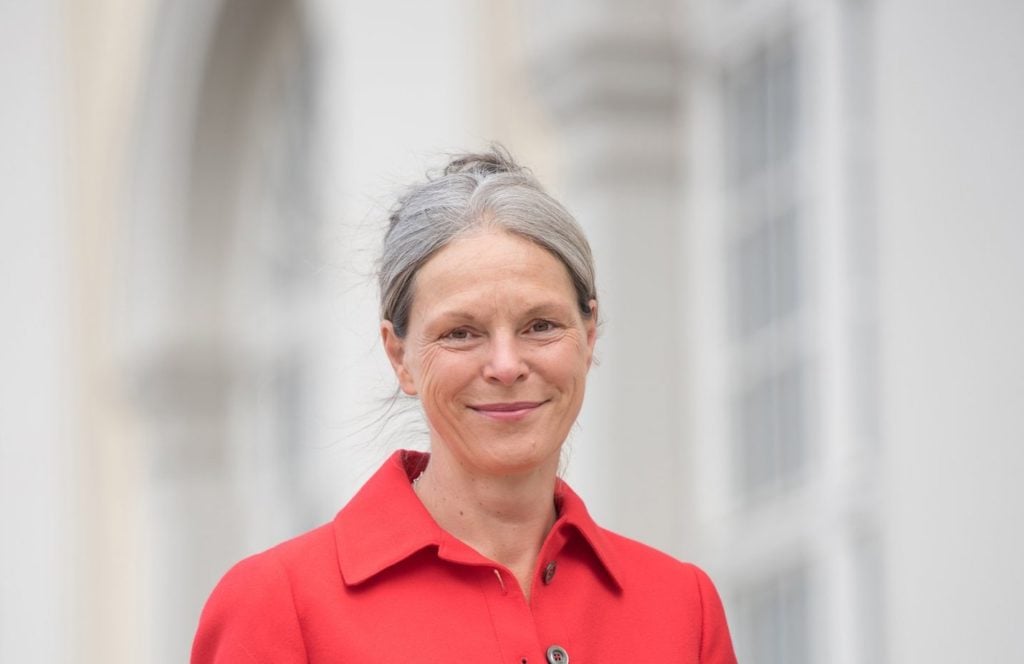
Sabine Schormann, former general director of Documenta, resigned amid the controversy. Photo: Christian Malsch, courtesy of Museum Fridericianum gGmbH and documenta.
According to the most recent report, proximity to movements like BDS, the pro-Palestinian movement Boycott, Divestment, Sanctions, does not account for exclusion from public funding and the pre-control of exhibition-making, as had been demanded by some politicians after the opening of Documenta 15. Some of the members of Ruangrupa came under suspicion in the German press early in 2022 for signing an open letter that was pro-BDS.
If antisemitic or racist content violates discrimination laws, however, administrative and supervisory bodies are obliged to intervene. In the case of People’s Justice, those responsible reacted adequately, but the report leaves open, if legal responsibilities were violated in regard to the other contested works in the exhibition. The problems that emerged at Documenta 15, the report concluded, “cannot be solved with the instruments of jurisprudence.”
Finally, the panel proposed six measures for the future organization of Documenta, including a clear definition of responsibilities and liabilities within the structural organization, establishing professional complaint management, and an agreement on definitions for antisemitism and its handling beyond law.
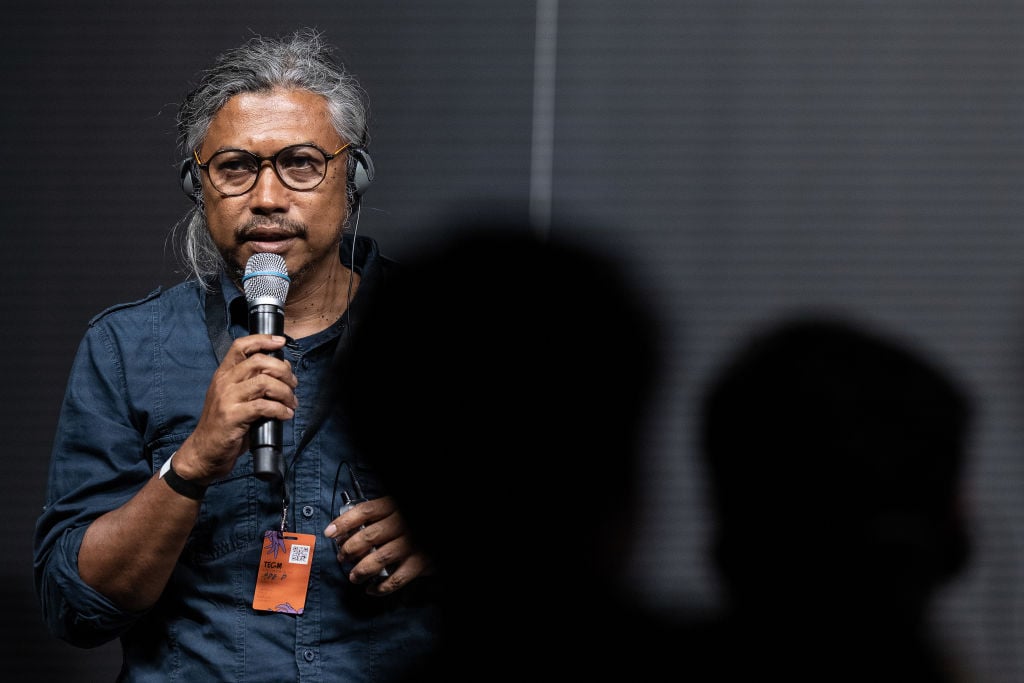
Ade Darmawan, spokesman for the curatorial collective Ruangrupa, speaks on the topic of “Anti-Semitism in Art” at a panel discussion organized by the Anne Frank Educational Center and the supporting organization documenta gGmbH. Photo by Swen Pförtner/picture alliance via Getty Images.
The latter indicates the weaknesses of the scientific advisory panel. While members Julia Bernstein, a sociology professor at the Frankfurt University of Applied Science, and psychologist Marina Chernivsky both did notable research on the mediation of antisemitism in German educational institutions, there was no antisemitism scholar of record or Middle East expert despite the content of the disputed works. The definition of antisemitism and its conflation with criticism of Israel’s occupation in the Palestinian Territories is controversial even among some antisemitism scholars.
One of the focal points of the controversy—the issue of contextualization and racism towards non-Western perspectives—was left out of the report entirely. Marion Ackermann, general director of the Dresden State Art collections, was the only member to offer expertise on art history. Postcolonial expert Facil Tesfaye and Elsa Clavé, an expert on cultural history in Southeast Asia, were the two panel members who could provide global perspectives and intercultural contextualization; they tacitly stepped down during the investigation process last fall.
The scientific advisory panel addressed relevant points and tried to propose nuanced conclusions, but its composition and inaccuracies in the report (including quoting Hito Steyerl’s work as being produced for Documenta 15, which it is incorrect, or comparing the exhibition with the commercial fair Art Basel) raise doubts whether the German frame of reference sufficiently considered the global scope of the controversy.
After all, the questions that arose from the clashing of global narratives, including how issues around how colonialism may have caused antisemitism to migrate and morph, still remain. All the while, the effects of Documenta 15’s controversy are still palpable in Germany. The debate over Documenta 15 is likely to rage on.
More Trending Stories:
An Amateur Metal Detectorist in the U.K. Has Struck History-Lover’s Gold: A 16th-Century Pendant With Links to King Henry VIII
‘It’s Now or Never’: The Rijksmuseum’s Hotly Anticipated Blockbuster Vermeer Show Is Finally Here—and It’s Unmissable
LVMH Shelled Out $47 Million to Keep a Caillebotte Masterpiece in France. So Why Are People Complaining?
Rising Photographer Dannielle Bowman Wants to Make Images That Function Like Memories
A Prized Kandinsky Painting Recently Restituted to the Heirs of a Jewish Collector May Fetch $45 Million at Sotheby’s
Emily Sargent, Not Just a Sister to John, Was a Serious Painter in Her Own Right. Her Watercolor Landscapes are Finally Entering Museums—and the Spotlight
Hermès Wins Its Lawsuit Against the Digital Artist Who Made ‘MetaBirkins,’ Setting a Precedent for NFT Copyright Cases
See Inside Actor Jim Carrey’s Art-Filled Home, Now on the Market for $29 Million (Art Not Included)
